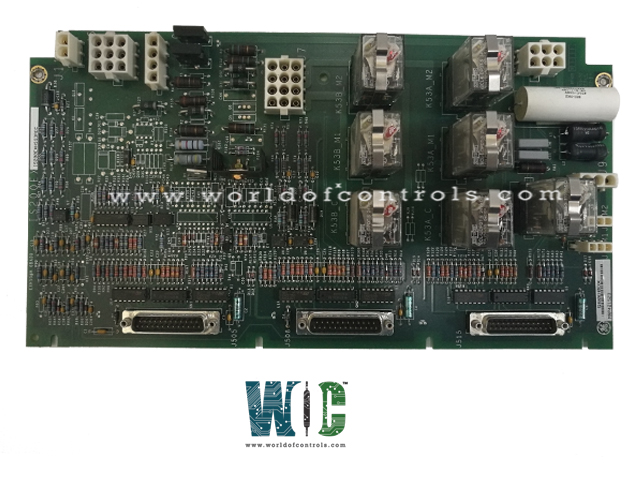
World Of Controls understands the criticality of your requirement and works towards reducing the lead time as much as possible.
IS200EXHSG3AEC - Exciter HS Relay Driver Board is available in stock which ships the same day.
IS200EXHSG3AEC - Exciter HS Relay Driver Board comes in UNUSED as well as REBUILT condition.
To avail our best deals for IS200EXHSG3AEC - Exciter HS Relay Driver Board, contact us and we will get back to you within 24 hours.
Part Number: IS200EXHSG3AEC
Manufacturer: General Electric
Country of Manufacture: United States (USA)
Number of relay channels: 12
Size: 8.26 cm high x 4.19 cm wide x 12.1 cm deep
Technology: Surface-mount
Series: EX2100
Function: Exciter HS Relay Driver Board
IS200EXHSG3AEC is a Exciter HS Relay Driver Board developed by GE. It is part of the GE Speedtronic EX2100 gas turbine control system. The Exciter High-Speed Relay Driver (EXHS) board is an integral component of the EX2100 Excitation Control system, playing a crucial role in providing drivers for various components essential for excitation control in industrial applications.
WOC has the largest stock of Speedtronic EX2100 Spares and we can repair your faulty spares with a warranty. WORLD OF CONTROLS can also supply unused and rebuilt components backed by a warranty. Our team of experts is available round the clock to support your urgent needs related to critical spares, contact us.
What is IS200EXHSG3AEC?
It is a Exciter HS Relay Driver Board and is part of the GE Speedtronic EX2100 gas turbine control system.
What are the primary functions of the relay drivers on the board?
The relay drivers on the EXHS board, namely K41 (M1, M2, C), are responsible for controlling the close function contactors, while K53A and K53B manage the flashing pilot relays. Additionally, KDEP serves as the single de-excitation pilot relay.
What are the purposes of the three 25-pin connectors, J505, J508, and J515?
These connectors facilitate communication between the EXHS board and the EMIO (Excitation Monitoring and Instrumentation Output) boards. J505 connects to M1, J508 connects to M2, and J515 connects to C. However, it's important to note that J515 does not carry de-excitation and crowbar signals.
What signals do the connectors J505, J508, and J515 carry?
The connectors carry similar signals and have similar wiring patterns. They facilitate the transmission of control signals and data between the EXHS board and the respective EMIO boards, enabling effective monitoring and control of the excitation system.
What is the purpose of plugs J12M1 and J12M2?
Plugs J12M1 and J12M2 serve to bring in 70 V DC from the M1 and M2 power supplies, respectively, for auxiliary contact wetting. This ensures proper functioning and longevity of the auxiliary contacts associated with the excitation control system.
How does the board contribute to the overall operation of the excitation control system?
It plays a crucial role in providing drivers for various components essential for excitation control, including close function contactors and flashing pilot relays. It ensures efficient and reliable operation of these components, contributing to the overall performance and safety of the excitation system in industrial applications.